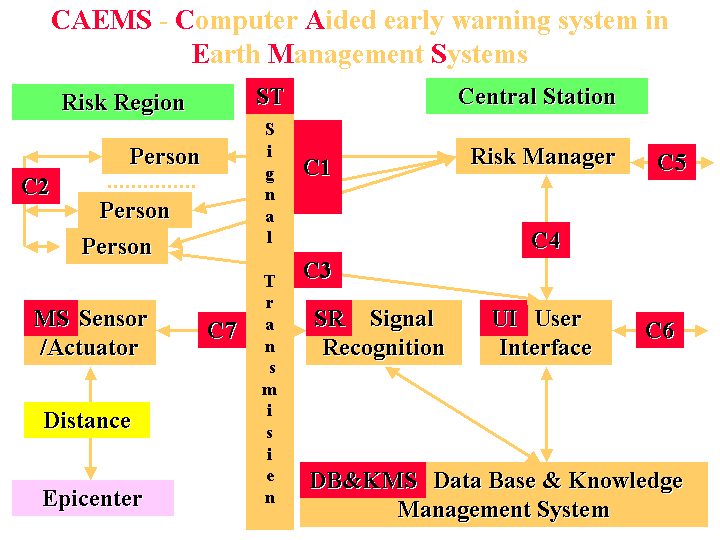Innovation
We have been developing Computer Aided Solutions for different applications for more then 40 years. The first one was started in 1968 and realised in 1974 as Computer Aided Engineering – RTV – (Rechnerunterstütze Technische Vorbereitung) for the machine tool industry /H. Kupper, G. Roscher:, 1975, G. Roscher 1975, 1977, .../.
RTV was generalised to an Integrated Principle Solution for CAD/CAM in the end of the 1970s. This Integrated Principle Solution RTV includes:
- The Computational Integrated Principle Solution designed as Information Process /Lezak 2004/ with the subsystems
-
I: Input System with a Common Language Concept, based on natural language, methods for definition of languages, many defined user languages, and a compiler generator. This strategy for the design of user language is the external analogy to the later designed XML-strategy for the design of flexible internal interfaces, descriptions, and presentations. A special designed language (SYX meaning SYstem description language for the system X) was defined. Each user was able to design their own user language by using SYX.
-
S: Data Base System with tables and data using user defined languages. Already with the first solution 1974/5 a language was developed for the definition of tables on the basis of the relational data model. Procedures, especially text procedures are designed for the storage of unstructured knowledge.
-
P: Processing, among others, with dynamic calling of user modules.
-
O: Output system with a generator for the output of user specific data and forms.
- The Technological Principle Solution with generalised user specific knowledge.
- The Methodological Guidelines for the adaptation of the Integrated Principle Solution by the user (www.ICSRoscher.de/RTV.htm).
Integrated CAD/CAM-solutions as RTV are simulations of human thinking, especially for processes characterising human thinking in an excellent manner such as the design of new products and their manufacturing. The application and generalisation of the Integrated CAD/CAM solution led to a new strategy for Computer Aided Solutions (CAS) which we realised for psychophysiological research and other applications. The strategy for Computer Aided Solutions is described as: “If one wishes to recognise the function of the brain, one must use the most powerful tools: human intelligence, especially the natural language in communicative situations, supported by high performance computer systems, worked in real-time.” /ICS4, p. 90/.
Development of suitable information systems for early warning systems
The CARiMan for Geological Accidents CARiMan/SE is in line with the designated strategy of the Network of Excellence CARiMan and the architecture as CAEMS is presented in Fig. B.3-1:
In the centre of the System Architecture is the communication C1, .. C7 and must be designed, implemented, installed, tested and evaluated very carefully. The result will be the optimisation of the chain:
- Monitoring of the Risk Region,
- using MicroSystems MS for signal acquisition MS (C7),
- Signal Transmission ST to the Central Station,
- Signal Recognition SR with highest accuracy in shortest time,
- Data Base and Knowledge Management System DB&KMS for storing all incoming data and the knowledge,
- User Interface UI for presentation of the possible risk situation for optimal support of the decision making by the Risk Manager in shortest time,
- User Interface UI for information of the persons in the Risk Region, the regional, national, and international responsible (C3, C6),
- personal communication with the persons in the Risk Region (C1),
- personal communication with the regional, national, and international responsible (C5)
- support of the Crisis Management.
We name this chain the CAEM-Chain:

Fig. B.3-1: System Architecture of the CAEMS - Computer Aided early warning system in Earth Management
The Computer Aided Solutions can be adapted to Aided Teaching and Training Systems CATTS. The user can train the evaluation of stored signals of early events, can introduce his/her own knowledge and can be trained for the knowledge acquisition.
A detailed outline of this strategy is presented on the web: www.ICSRoscher.de/CARiMan.htm
Innovative method for real-time signal recognition as a Humanlike Perception System
Here we present a method for the real-time recognition of signals in the time domain, named the method of Virtual Sources (in German: Virtuelle Quelle) – VQ. This method is in contrast to the established frequency domain methods such as the Discrete Fourier Transform (DFT). The innovative method of VQ is based on the “old” peak measurement and evaluates each event in the signal as extreme amplitude, optionally extreme slope, and as a further option each extreme curvature. Further steps build up a hierarchical system of chained lists of VQs, named SuperPeaks, Cycles and Classes.
Each such event is transformed into a data structure named Virtual Source - VQ. Applications have been realised for multi-channel EEG and ECG, single channel ECG, acceleration in crash-tests for cars, video, and other signals such as the recognition of phonemes in natural spoken languages.
Data Base and Knowledge Management Systems – DB&KMS – are used for the acquisition of personal knowledge of the experienced user in the context of the incoming signal. The high recognition performance of the expert user is used in direct communication with the computer.
This strategy opens up a new level of quality in computer-based signal recognition, in going from signal to knowledge.